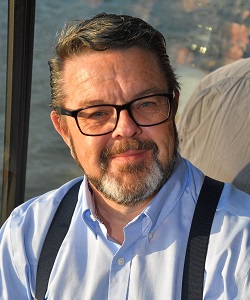The evolving landscape of cell and gene therapies (C>s) holds transformative potential for the future of medicine. From early experimental trials to groundbreaking FDA approvals, the journey of C>s has been marked by rapid advancements and significant hurdles. In this article, Bill Vincent, an experienced C> Biotech Founder and CEO, delves into the key milestones that have shaped this field, highlighting the challenges overcome and the promising future that lies ahead.
The C> renaissance
The field of C>s is rapidly transforming the landscape of modern medicine, offering cutting-edge treatments for previously intractable diseases. In recent years, we have witnessed remarkable progress in this area, with novel therapies emerging to address conditions like spinal muscular atrophy (SMA), hemophilia and sickle cell disease, offering newfound hope for patients and their families [1-3].
Although these recent achievements are undoubtedly groundbreaking, they represent the culmination of decades of scientific discovery, technological innovation and collaborative efforts.
Laying the foundation
Even before the intricacies of DNA were fully understood, the potential of cell-based therapies was being explored. In 1939, a daring attempt to treat aplastic anemia with bone marrow injections marked a pivotal moment in C> progression [4].
While the field of C> truly began to flourish in the 1950s and 1960s with greater scientific understanding, the urgency to address radiation-induced illnesses following the use of atomic bombs during World War II fueled initial research efforts. The looming specter of nuclear war and the U.S. Navy’s ambitious nuclear programs in the mid-20th century fueled a pressing need to address the devastating effects of radiation exposure [5].
In 1957, researchers took the bold step of attempting the first allogeneic bone marrow stem cell transplant for leukemia patients. Although this initial endeavor faced challenges due to immunological complications, it underscored the importance of histocompatibility and spurred further research into the complex interactions between donor and recipient cells [5]. It also laid the groundwork for a major shift in focus in 1975, as researchers turned their attention to autologous bone marrow stem cell transplants, utilizing a patient’s cells to reduce the risk of rejection [6].
More than 50 years after one of the first documented experimental C> treatments, a pivotal moment arrived in 1990 with the first successful gene therapy trial. By genetically modifying a patient’s bone marrow stem cells, researchers were able to treat severe combined immunodeficiency (SCID), a previously fatal genetic disorder [7]. This groundbreaking achievement validated the concept of gene therapy and heralded a new era of medicine, one where manipulating genetic material could potentially cure diseases at their root cause.
Navigating setbacks and learning from mistakes
The exhilarating progress of the 1990s was met with a stark reminder of the complexities and risks inherent in gene therapy. In 1999, the tragic death of Jesse Gelsinger during a clinical trial for the treatment of ornithine transcarbamylase deficiency, an X-linked genetic disease of the liver, highlighted the need for stringent safety protocols and rigorous oversight [8]. When given an infusion of a corrective gene encased in a dose of attenuated cold virus, Gelsinger experienced a severe immune reaction to the vector. This incident catalyzed greater caution and transparency in the field, leading to the establishment of the Gene Therapy Clinical Trial Monitoring Plan and the Gene Transfer Safety Symposia [9].
In 2000, a clinical trial using a gamma retrovirus vector raised further concerns about the safety of gene insertion. While the therapy proved effective for most patients, a subset developed leukemia due to the viral vector inserting itself near oncogenes, genes with the potential to cause cancer [10]. This unintended consequence underscored the importance of refining gene delivery methods and vectors to minimize the risk of insertional mutagenesis, a phenomenon where the inserted genetic material disrupts the normal functioning of other genes.
These challenges prompted a period of introspection and refinement within the field, as researchers and clinicians grappled with the delicate balance between innovation and patient safety. The introduction of self-inactivating (SIN) lentiviral vectors (LVVs) in 2010, which reduce the risk of insertional mutagenesis in gene therapies, marked a significant step forward, offering a safer and more efficient method for gene delivery [11]. Efforts also focused on improving viral vector designs with reduced immunogenicity and better safety profiles as well as using tissue-specific promoters to reduce off-target effects.
Accelerating innovation and therapeutic breakthroughs
In the last decade, the pace of innovation in the C> space has accelerated dramatically, with groundbreaking discoveries and technological advancements rapidly translating into approved therapies.
A pivotal moment occurred in 2012 with the development of CRISPR/Cas9, a revolutionary gene editing technology that has transformed genetic manipulation [12]. The ability to precisely target and modify genetic material through CRISPR/Cas9 gene editing holds immense potential for correcting disease-causing mutations and enhancing therapeutic efficacy. This breakthrough opened the floodgates for a wave of therapeutic applications, including the first clinical trial using CRISPR/Cas9 for gene disruption in beta-hemoglobinopathies in 2018 [13].
The remarkable speed at which CRISPR has progressed from initial discovery to clinical application underscores its transformative potential. Only 11 years after harnessing CRISPR-Cas9 as a tool to modify targeted regions of genomes, the first FDA-approved therapy utilizing CRISPR/Cas9 was approved (Casgevy, a cell-based gene therapy approved for the treatment of sickle cell disease) [3].
Ongoing evolution and unforeseen possibilities
Today, over 30 gene therapies and over 65 non-genetically modified cell therapies have been approved for use globally [14]. The field of C> continues to evolve rapidly, with new technologies and therapies emerging constantly.
Earlier this year, a new gene editing technique derived from bacterial “jumping genes” was described, enabling the addition, removal, recombination or inversion of DNA sequences while potentially overcoming some of the limitations of CRISPR [15].
As we move into a future of increasingly powerful C>s, realizing their potential will necessitate a paradigm shift in how stakeholders across the industry collaborate and communicate. Open dialogue and knowledge sharing between researchers, clinicians, manufacturers and regulators will be essential to accelerate the development and adoption of these transformative treatments. By fostering a collaborative ecosystem, we can collectively address the challenges of scalability, variability and regulatory compliance, paving the way for a future where C>s are a cornerstone of modern medicine.
References:
- https://www.fda.gov/vaccines-blood-biologics/zolgensma
- https://www.fda.gov/vaccines-blood-biologics/vaccines/hemgenix
- https://www.fda.gov/vaccines-blood-biologics/casgevy
- George W. Santos, History of bone marrow transplantation, Clinics in Haematology, Volume 12, Issue 3, 1983, Pages 611-639, ISSN 0308-2261. https://doi.org/10.1016/S0308-2261(83)80003-4.
- https://ascopost.com/issues/july-10-2016/the-age-of-the-atomic-hematologistsoncologists/
- Gorin NC. History and Development of Autologous Stem Cell Transplantation for Acute Myeloid Leukemia. Clin Hematol Int. 2021 Jul 15;3(3):83-95. doi: 10.2991/chi.k.210703.002. PMID: 34820613; PMCID: PMC8486970.
- Anderson WF. September 14, 1990: the beginning. Hum Gene Ther. 1990 Winter;1(4):371-2. doi: 10.1089/hum.1990.1.4-371. PMID: 1981846.
- Sibbald B. Death but one unintended consequence of gene-therapy trial. CMAJ. 2001 May 29;164(11):1612. PMID: 11402803; PMCID: PMC81135.
- Stephenson J. Gene Therapy Trials Oversight. JAMA. 2000;283(15):1950. doi:10.1001/jama.283.15.1950
- Maetzig T, Galla M, Baum C, Schambach A. Gammaretroviral vectors: biology, technology and application. Viruses. 2011 Jun;3(6):677-713. doi: 10.3390/v3060677. Epub 2011 Jun 3. PMID: 21994751; PMCID: PMC3185771.
- Cavazzana-Calvo M, et al. Transfusion independence and HMGA2 activation after gene therapy of human β-thalassaemia. Nature. 2010 Sep 16;467(7313):318-22. doi: 10.1038/nature09328. PMID: 20844535; PMCID: PMC3355472.
- Rodríguez-Rodríguez DR, Ramírez-Solís R, Garza-Elizondo MA, Garza-Rodríguez ML, Barrera-Saldaña HA. Genome editing: A perspective on the application of CRISPR/Cas9 to study human diseases (Review). Int J Mol Med. 2019 Apr;43(4):1559-1574. doi: 10.3892/ijmm.2019.4112. Epub 2019 Feb 26. PMID: 30816503; PMCID: PMC6414166.
- Frangoul, H. et al. (2020). CRISPR-Cas9 Gene Editing for Sickle Cell Disease and β-Thalassemia. New England Journal of Medicine, 384(2), 252-260. doi: 10.1056/NEJMoa2031054
- American Society for Gene + Cell Therapy. Q2 2024 Landscape Report. Accessed at: https://www.asgct.org/publications/landscape-report
- https://www.fiercebiotech.com/research/no-crispr-no-problem-jumping-gene-system-could-be-bridge-complex-gene-editing






















